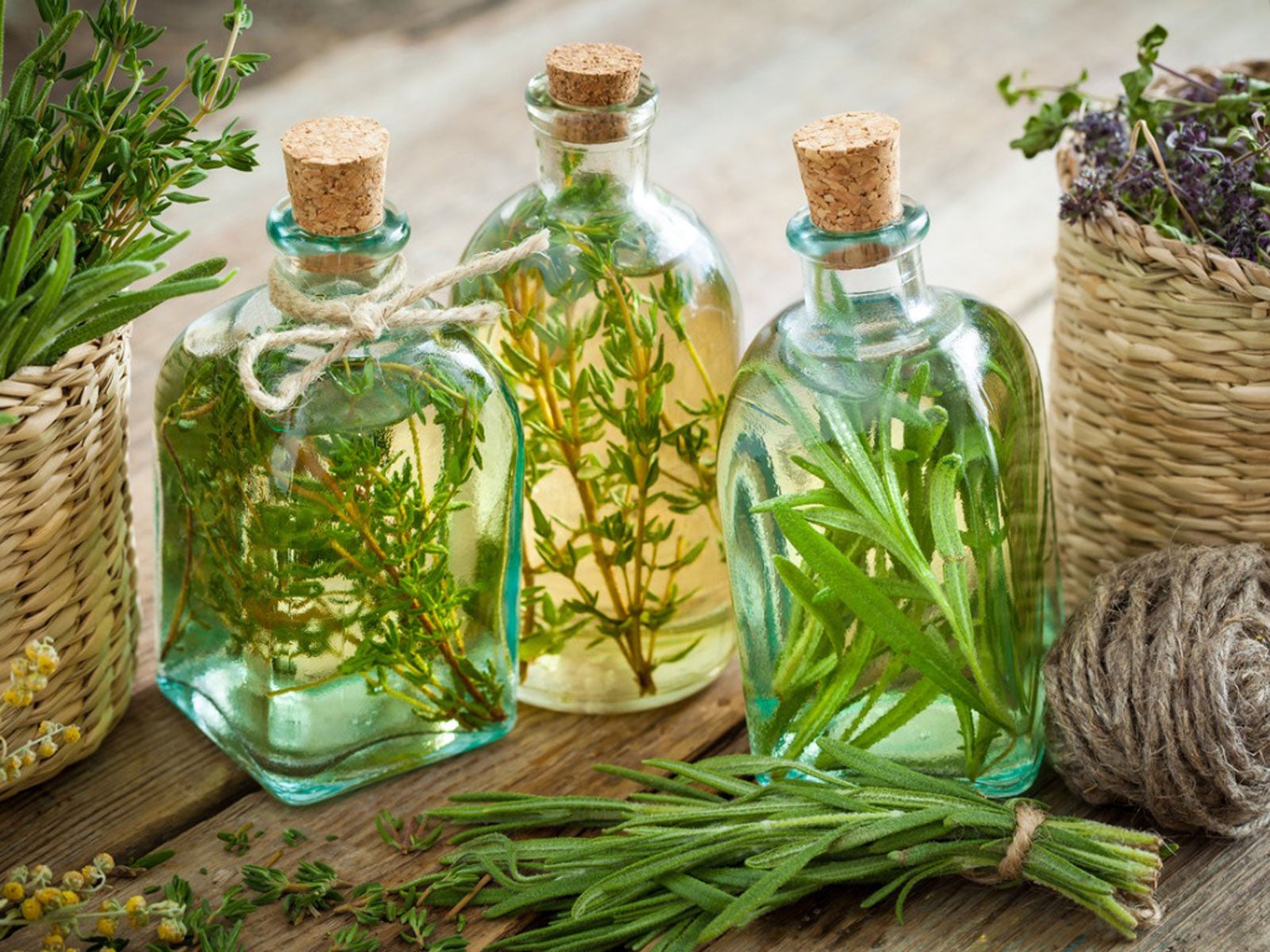Herbal Vinegar Recipes – How To Infuse Vinegar With Herbs

If you enjoy making your own vinaigrettes, then you’ve probably purchased an herb infused vinegar and know that they can cost quite a pretty penny. Making DIY herbal vinegars can save you money, are simple and fun to do, and make great gifts.
An herbal vinegar infusion is simply vinegar with herbs which can come from your own garden, or purchased. Many herbal vinegar recipes can be found, but they are all in tune on the basics.
Materials for Herb Infused Vinegar
To make DIY herbal vinegars, you will need clean, sterilized glass jars or bottles and lids, vinegar (we’ll get to that later), and fresh or dried herbs.
The bottles or jars need to have corks, screw-on caps, or two-piece canning lids. Wash the glass containers thoroughly with warm, soapy water and rinse well. Sterilize them by immersing them in boiling water for ten minutes. Be sure to put the jars in the boiling water when they are still warm from washing or they will crack and break. Follow steps one and two for the caps as well, or use pre-sterilized corks.
As to the vinegar, traditionally distilled white vinegar or cider vinegar has been used to make herbal vinegar infusions. Of these two, cider vinegar has a distinct flavor while distilled vinegar is less complex, thus creating a truer reflection of the infused herbs. Today, many epicures use wine vinegar which, while more expensive, carries with it more multifaceted flavor profiles.
How to Make DIY Herbal Vinegars
There are plenty of herbal vinegar recipes to be found but at their heart they are all similar. You may use dried or fresh herbs, although to my palate, fresh herbs are far more superior.
Use only the freshest herbs you can obtain for best results, ideally those picked from your garden in the morning just after the dew has dried. Discard any discolored, munched on, or dried herbs. Wash the herbs gently and blot on a clean towel.
Gardening tips, videos, info and more delivered right to your inbox!
Sign up for the Gardening Know How newsletter today and receive a free copy of our e-book "How to Grow Delicious Tomatoes".
You will need three to four sprigs of your herb(s) of choice per pint of vinegar. You may also wish to include additional flavorings such as garlic, jalapeño, berries, citrus peel, cinnamon, peppercorns, or mustard seed at the rate of ½ teaspoon (2.5 g.) per pint. Wash these flavorings prior to use. If using dried herbs, you will need 3 tablespoons (43 g.).
Simple Herbal Vinegar Recipe
Place the herbs, spices, fruit and/or vegetables you’re using in sterilized pint jars. Heat the vinegar to just below boiling and pour over the flavoring ingredients. Leave a bit of space at the top of the jar and then seal with the sanitized lids.
Store the herbal vinegar infusions for three to four weeks to allow the flavors to develop and marry. At this juncture, taste the vinegar. If need be, allow the vinegar to sit and develop longer.
When the DIY vinegar with herbs is infused to your liking, strain the solids through cheesecloth or a coffee filter and discard. Pour the strained vinegar into sterilized jars or bottles. If you like, add a sanitized sprig of herb to the bottle before sealing.
Refrigerate and use DIY herbal vinegars within three months. If you need to store the vinegar longer, heat process the jars as you would for canning by submerging the jars of vinegar in a boiling water canner for ten minutes.
If the product becomes cloudy or shows signs of mold, discard immediately.

Amy Grant has been gardening for 30 years and writing for 15. A professional chef and caterer, Amy's area of expertise is culinary gardening.